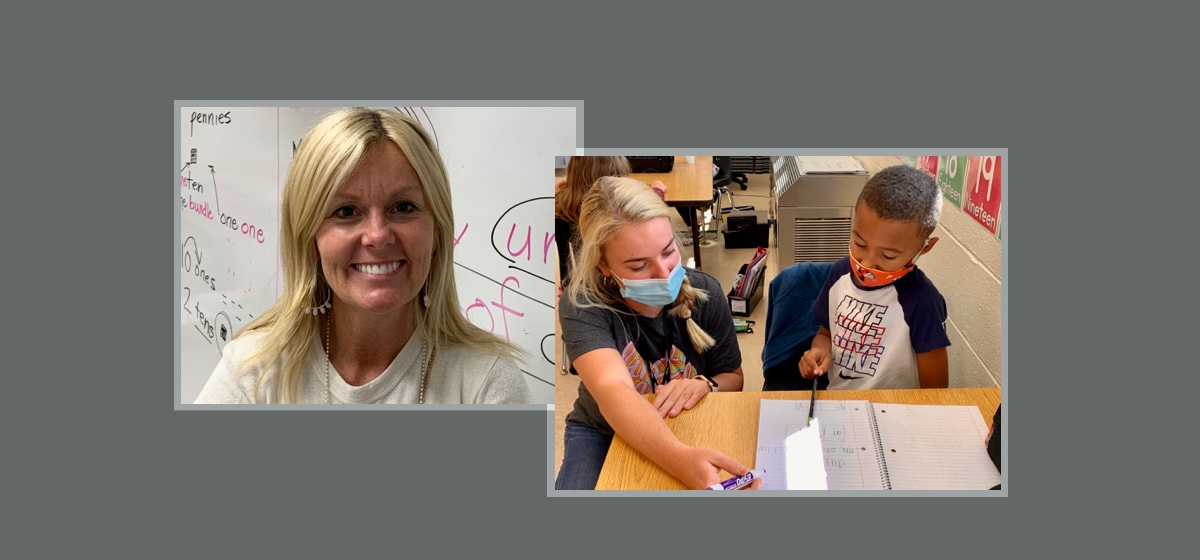Julie and Madeline are two teachers in my district who happen to be a mother and daughter pair. Julie is in her 27th year of teaching and Madeline is in her first. Madeline dove headfirst into distance learning, creating apps and videos like a pro. For the first few days, Julie attempted to replicate everything Madeline was doing in her classroom, which caused her quite a lot of stress until one of the district coaches encouraged Julie to teach to her strengths, rather than to try to mimic Madeline’s. Julie’s ability to understand and relate to her students academically, through careful questioning and listening, is unmatched. While it was going to be a shift for her to get to know her students remotely this year, she soon discovered that her strengths could be applied to this new setting as well.
If there is one thing my over 25 years in education has taught me, it’s that every teacher is so different. With our changing context this year – moving back and forth from in-person to virtual – educators feel unmoored. When online, their methods of teaching have been narrowed so much that they have a tendency to question if they are doing the right thing. During this ever changing environment, it would serve us all to remember, and honor, that each teacher has a unique way of teaching—their own “thumbprint.”
A teacher’s thumbprint contains, among other things, the knowledge of how a student learns best. It encompasses much more than just knowing what a child likes to do outside of school, it’s knowing how a student’s personality influences how they learn. It’s understanding which students are comfortable speaking their thoughts and which prefer to write them down. All of this starts with teachers knowing what students know. And at the heart of knowing what students know is formative assessment.
Getting to know students when you’re teaching remotely is challenging. It’s hard to do when you can’t just pull students aside, much less when you’re dealing with all the logistical considerations. Districts using comprehensive, high quality instructional materials have an advantage, and should turn to them for help. For example, our reading curriculum, Wit & Wisdom, utilizes “notice and wonder” charts. The wonder section gives the teacher great insights into students’ thinking. We recommend taking the time to do fluency checks with individual students online and having them use programs like Flipgrid to explain their thinking.
The teacher’s thumbprint also includes the ability to be analytical about one’s practice: to not just know what to do, but to know WHY you’re doing it. Put another way, a teacher’s thumbprint isn’t just the knowledge, it’s what you DO with the knowledge.
My first experience with really focusing on the analysis of teaching came 20 years ago when I was working on National Board Teacher Certification. One of the Five Core Propositions of NBPTS is that teachers are committed to students and their learning. Effective pedagogy requires a teacher to take her knowledge of the content and her knowledge of where the students are and adjust instruction accordingly. For example, most high quality instructional materials include ideal vignettes in the teaching materials. Focusing on the teacher thumbprint reminds teachers to look at those vignettes not as scripts but, instead, as examples of a dialogue that should be adjusted based on the teacher’s knowledge of the content (including what that vignette is describing), the students in front of her, and what she does best as a teacher.
The teacher’s thumbprint assumes a level of metacognition about one’s practice. It’s the ability to see and think about how one’s actions as the teacher interact with the students in the classroom. We all need to take time to reflect on our strengths as educators and the students in front of us instead of trying to change our thumbprint. By understanding our strengths, we can apply them to our current context.
As a district leader, I believe it is my job to help schools create professional learning opportunities that enable teachers to do this. Earlier this summer, the MIT Teaching Systems Lab released Imagining September, which shared insights into what schooling should look like during COVID-19. During a podcast about the report, Neema Avashia said we had to lean into our values. As a district instructional leader, I’m clinging to my values and making them transparent to others.
I believe the most direct way to improve student learning is to improve teacher practice. For learning to happen, students have to be engaged – and this is rooted in a teacher’s understanding of the students before her. Truly understanding students means knowing where they are in relation to standards; all great teaching connects that knowledge to the ways the curriculum supports rigorous teaching of those standards.
Still, each educator has a unique teaching style that is responsive to students’ cognitive, social and emotional needs. More than ever this year, I’m leading this work by encouraging teachers to place their thumbprint on lessons. I’m encouraging teachers to be metacognitive about their thumbprint – to reflect on it, and not forget that it requires understanding their strengths and applying them to the current context, which is to say a wide range of learning environments. When we as educators maintain high rigorous academic content and learning environments, staying in tune with students and their needs, academic success will happen no matter what unfolds.
Jana Beth Francis is the assistant superintendent for teaching and learning for Daviess County Public Schools in Owensboro, KY.

